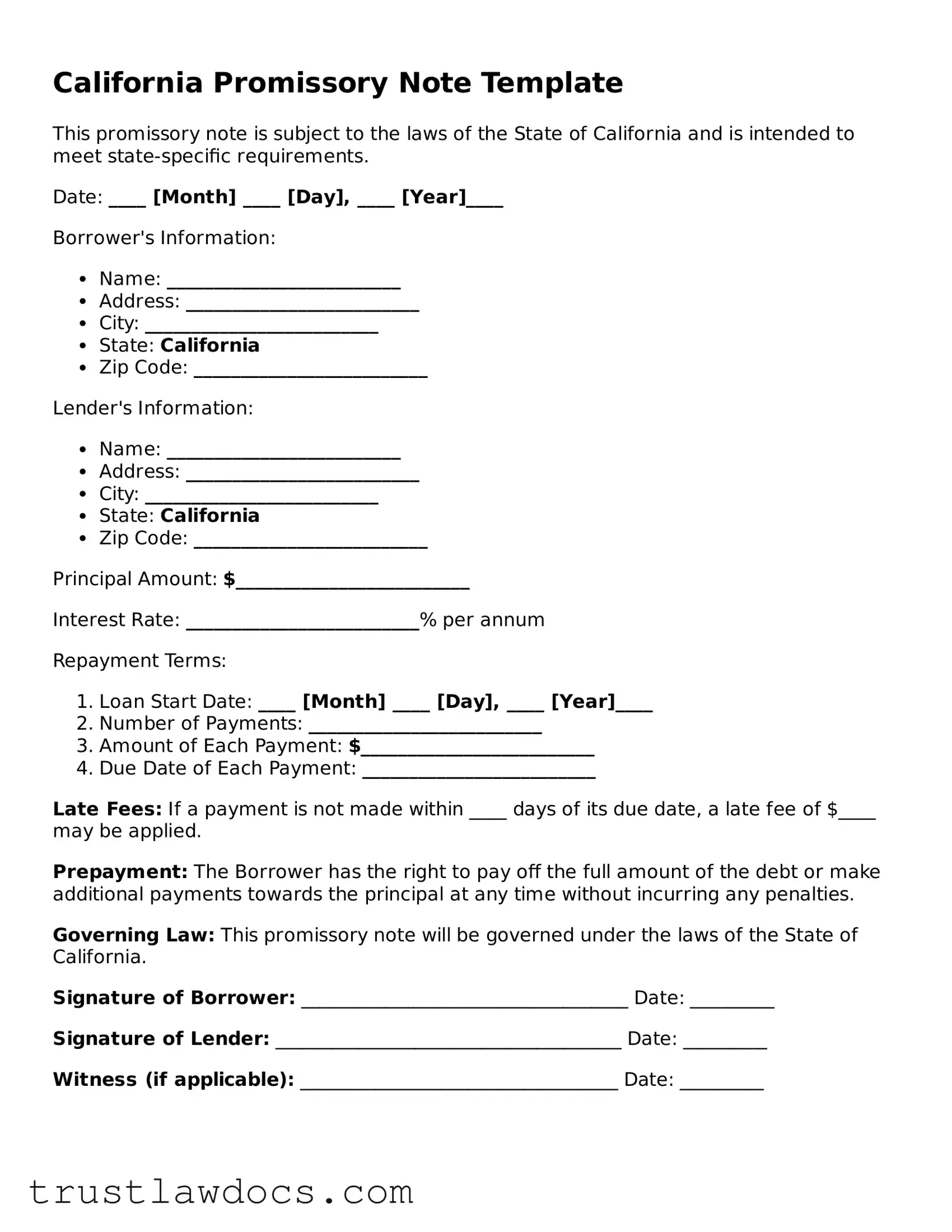What is a California Promissory Note?
A California Promissory Note is a legal document where one party, known as the borrower, agrees to pay back money borrowed from another party, the lender. This agreement specifies the amount of money borrowed, the interest rate, and the repayment schedule. In California, these documents are governed by local laws that outline how they must be executed and what terms need to be included.
How do I write a California Promissory Note?
To write a California Promissory Note, you must include the names and addresses of the borrower and lender, the amount of money loaned, the interest rate, and the repayment plan. Additionally, it should outline any collateral securing the loan and the actions to be taken if the borrower fails to repay the loan. Using a template specific to California can help ensure you include all necessary legal requirements.
Is a witness or notarization required for a California Promissory Note?
In California, a promissory note does not necessarily require notarization or a witness to be legally binding. However, having the document notarized or witnessed can add an extra layer of validation and may be helpful in the event of a legal dispute. It's advisable, but not legally mandatory.
Can interest be charged on a California Promissory Note, and if so, how much?
Yes, interest can be charged on a California Promissory Note. The maximum interest rate allowed is generally 10% per annum for personal, family, or household purposes. For other types of transactions, such as business loans, the rate may vary. It's crucial to adhere to the state's usury laws to avoid charging illegal interest rates.
What happens if the borrower does not repay the loan as agreed in the California Promissory Note?
If the borrower fails to repay the loan according to the agreed terms in the California Promissory Note, the lender may have the right to pursue legal action to collect the debt. This could involve suing for breach of contract or initiating foreclosure proceedings if the loan was secured by collateral. The specific remedies available would depend on the terms of the note and applicable state laws.
Do I need a lawyer to create a California Promissory Note?
While it's not a requirement to have a lawyer create a California Promissory Note, consulting with one can be very beneficial. A lawyer can provide advice on the note’s terms to ensure they comply with California laws and advise on any potential issues that might arise. This can help in creating a more solid and enforceable agreement.
Is a California Promissory Note the same as a loan agreement?
A California Promissory Note is similar to a loan agreement, as both are debt instruments stating that the borrower owes the lender a specific amount of money. However, a promissory note is usually more straightforward and less detailed than a loan agreement. A loan agreement often includes more comprehensive terms and conditions, such as representations and warranties, covenants, and event of default provisions. While both serve to document a loan, the choice between them depends on the complexity and requirements of the financial transaction.
